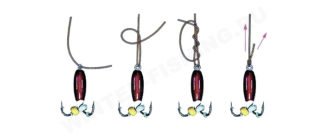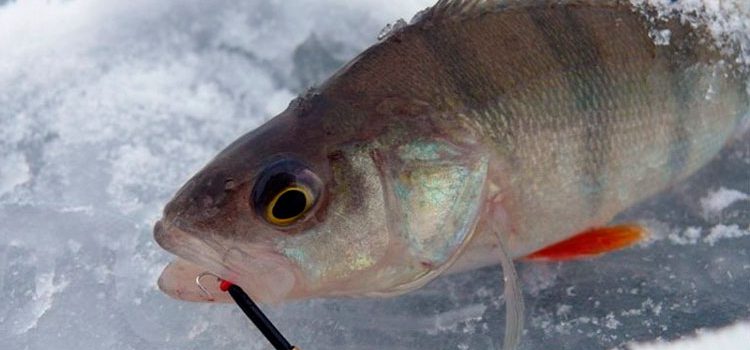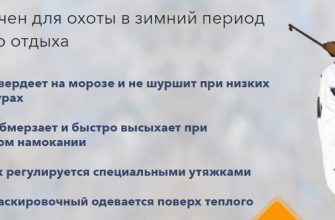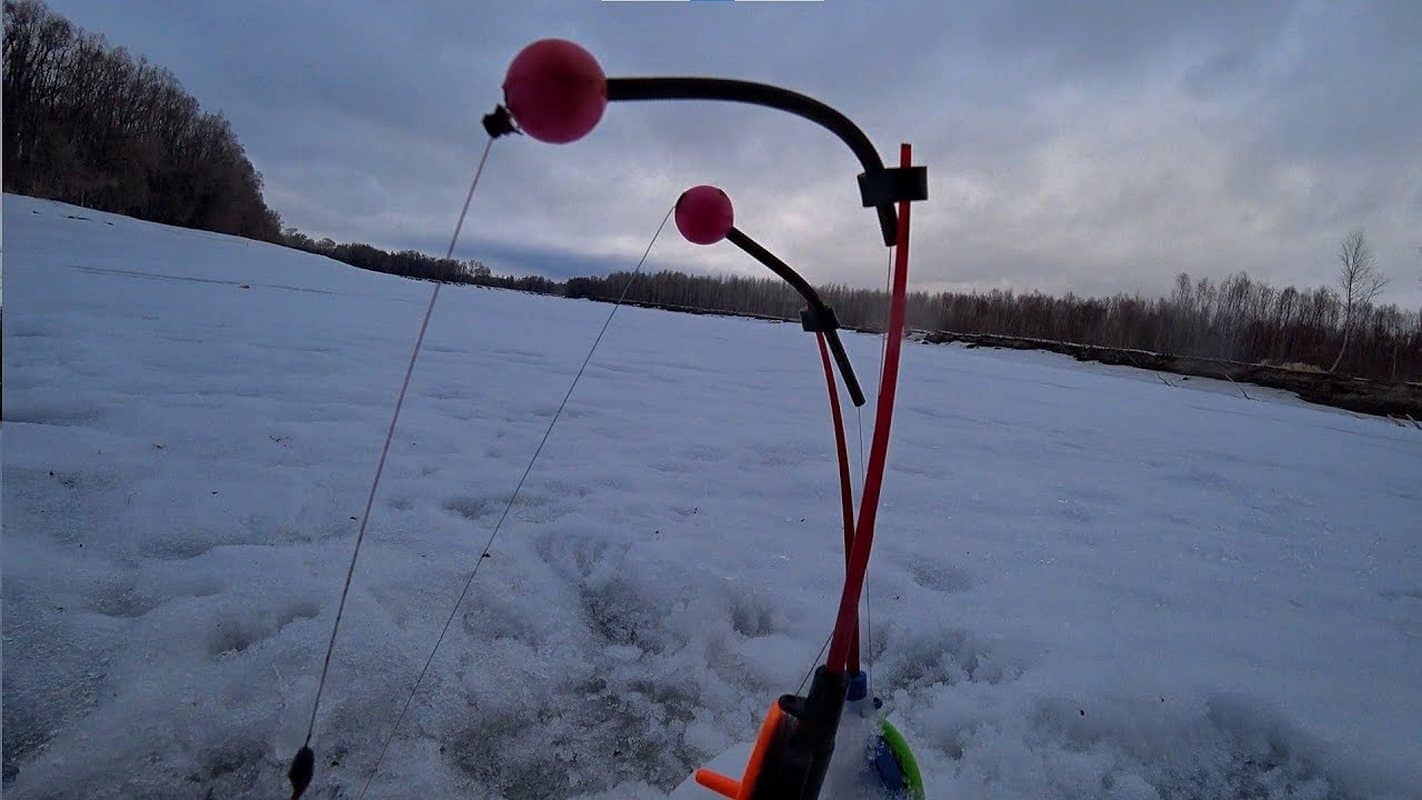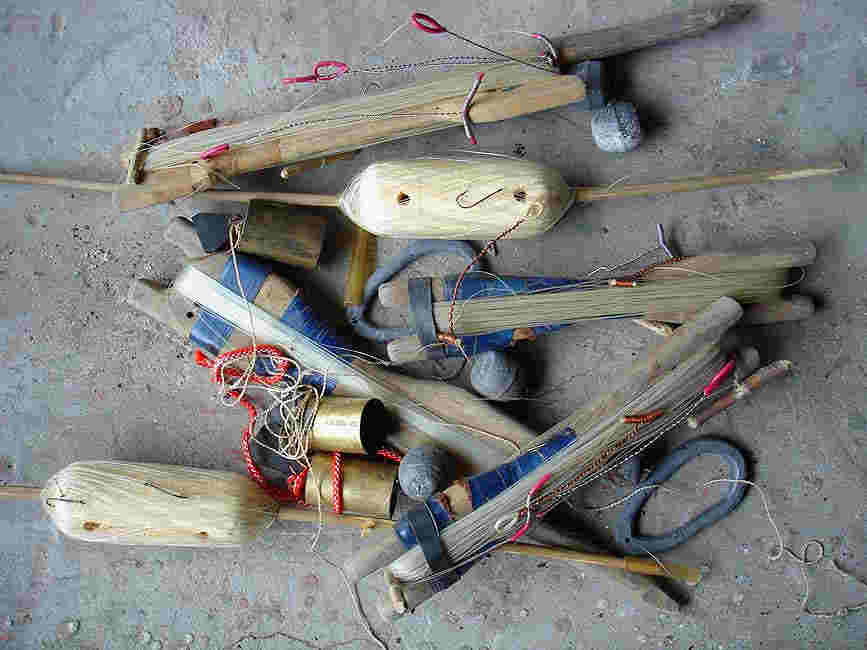Perch is a popular catch among both novice winter fishing enthusiasts and a coveted trophy among experienced anglers. This is due to the prevalence of the striped predator in the middle zone of the Russian Federation and the CIS. It is literally ubiquitous – lakes, rivers, reservoirs, oxbows … And it is also very greedy and almost omnivorous throughout the season – except, perhaps, the deepest wilderness, it always feeds and is very active. One of the popular methods for catching perch in the winter is by catching the hell.
The devil (devil, devil, goat) is one of the classic examples of a soapless jig, that is, jigs without a live attachment. Distantly resembles a dragonfly larva, but this is inaccurate. Equipped with three hooks. There is an option with a welded tee and a free hanging one. The game takes place in a vertical plane, without a horizontal component, if one has not been purposefully set by the angler.
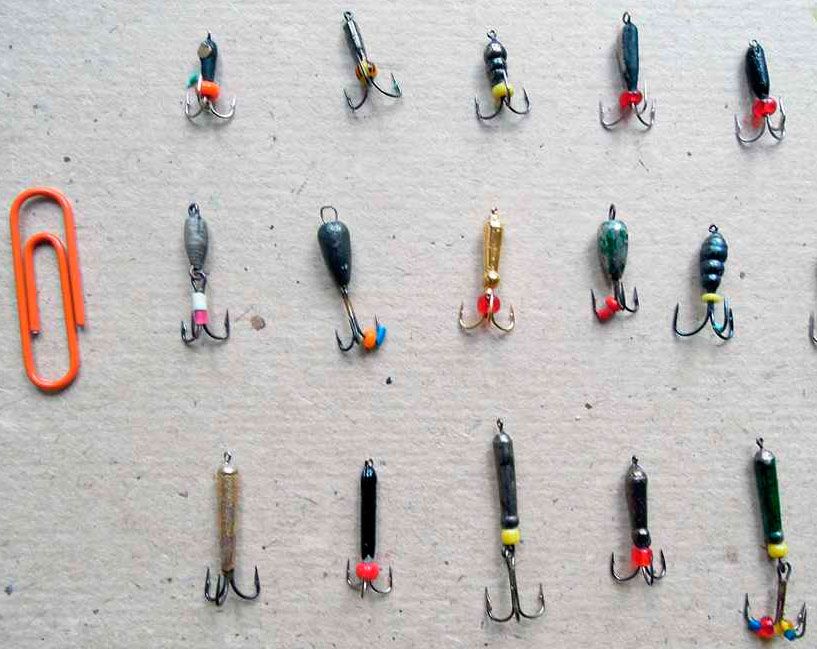
- A little about the devil, how about the way of fishing in winter – what is the power of the “possessed”?
- Catching a winter perch on the devil: searching for “sailors”, strategy, posting
- Where to find perch when fishing with a rewinder – devil
- Depending on the season – winter migration of striped
- Large water area – where to go?
- Driftwood, fallen shrubs and branches – perch anchorage point throughout the winter
- Strategy and tactics of actions of a fisherman on a pond when fishing for perch on devils
- Influence of weather conditions
- The kind of devil animations that striped robbers love
- Better to see once
- On the selection of a line for a perch is an important aspect of overall success.
- We collect the tackle
- Поделиться ссылкой:
A little about the devil, how about the way of fishing in winter – what is the power of the “possessed”?
For catching perch, mormyshless mormyshny devils are perfect. Especially for beginners who are just starting to learn the basics of winter fishing. No-nozzle tackle allows perch to be no less successful than when fishing with jigs with a nozzle, but at the same time does not require additional efforts to find / purchase and save bloodworms, additional equipment and knowledge. He took a fishing rod, a box with devils and a drill and went to the reservoir. You can catch perch on a devil almost everywhere and throughout the entire winter season – small sailors in the city on a small river after work, or humpbacks in a large reservoir. Fishing for devils on the first ice is most successful and at the end of winter, during the dead-winter period, adding bait still gives the best result.Also, purposeful fishing for perch on large devilfish cuts off bites of frank small things – white and sailors with a little finger. It is such a lack of fish that constantly flutters the bloodworms, preventing them from concentrating on catching worthy specimens. A wide selection of both factory-made (tungsten, lead, tin brazed, etc.), and handicraft devils, gives a wide field for experiment and the ability to use this type of fishing in any conditions. https://youtu.be/t3oxosMoFAg Perch moves around the reservoir a lot during the winter, and if you consider that catching the devil is primarily an active search, then this method of catching is the best fit for the striped robber.A wide selection of both factory-made (tungsten, lead, tin brazed, etc.), and handicraft devils, gives a wide field for experiment and the ability to use this type of fishing in any conditions. https://youtu.be/t3oxosMoFAg Perch moves around the reservoir a lot during the winter, and if you consider that catching the devil is primarily an active search, then this method of catching is the best fit for the striped robber.A wide selection of both factory (tungsten, lead, tin brazed, etc.) and DIY handicraft devils, gives a wide field for experiment and the ability to use this type of fishing in any conditions. https://youtu.be/t3oxosMoFAg Perch moves around the reservoir a lot during the winter, and if you consider that catching the devil is primarily an active search, then this method of catching is the best fit for the striped robber.then this method of fishing is the best fit for the striped robber.then this method of fishing is the best fit for the striped robber.
whole picture .
Catching a winter perch on the devil: searching for “sailors”, strategy, posting
Small perch stays almost all winter in the coastal zone, among vegetation, small branches, cattails and bushes. Less commonly, it can slide to the coastal edges in search of food and oxygen sources. When catching a medium and large striped robber, everything is more difficult, but that’s why it is also more interesting. It changes its parking lot depending on many factors – the specific period of winter, weather conditions, the type of reservoir, atmospheric pressure, and others. The main tactic of a successful perch when fishing with non-nosed jigs, in particular, on devils, is an active search and parallel exploration of the reservoir.
Where to find perch when fishing with a rewinder – devil
To hell, you can catch perch in any body of water and at almost any time of winter. But, of course, the places of its parking will change. And the first task of the fisherman is to know where to look for the perch … It would be wrong to say that the perch flickers around the reservoir randomly. This thesis is fundamentally wrong, with this approach, especially on an unfamiliar body of water, the fisherman is doomed to unpromising fishing for single specimens without a system. Yes, perch migration is inherent during freeze-up, but all its movements are subject to instincts and external conditions.
Depending on the season – winter migration of striped
The migration of perch is determined by meteorological conditions (in winter, pressure is above all), the presence of oxygen, the movement of the food supply, as well as the nature of a particular reservoir.
On the first iceas soon as the ice has melted and for 4-6 weeks after, the perch continues to keep at its favorite autumn places. At the submerged snag and bush near the shore. It can stand on the coastal edge and fall from it into the depth. The largest individuals stand at the exits of the pits. In the by-catch when catching not small devils often comes across roach, bastard, sometimes crucian carp. At the beginning of the freeze-up period, the perch continues to actively move and feed, catching up with fat before the deafness. It is worth moving and the fisherman-winter road, anticipating and anticipating the movements of the predator. The holes are scattered in a checkerboard pattern at a distance of 10-15 meters in order to quickly close the promising area. And when you find it, you can hit the target clearly, without wasting time on secondary tasks.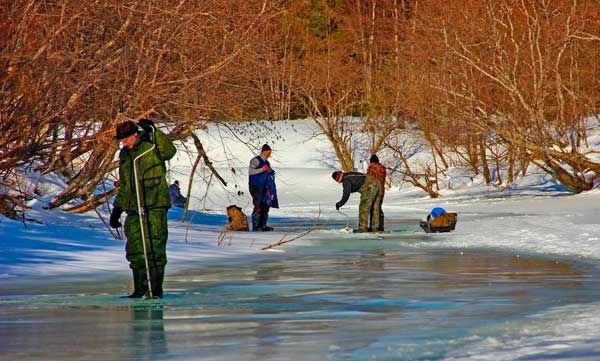
In the wildernesseverything is somewhat different. At this time, the striped one rolls down to deeper places and falls into a kind of suspended animation, but not one hundred percent. In January-February-early March, it is worth looking for depth differences, channel and coastal edges, underwater anomalies (islands, patches, snags, abrupt changes in the jet). In this case, the holes are drilled more closely at a distance of 3-6 meters from each other. And the most beautiful points are drilled even more densely. At this time, all possible methods of animation and varieties of devils are used. In order to stir up the passive predator as much as possible by all possible methods. Passive bass is not equal to dead. It can be deduced from the stuck result and made to grab the jig. Often the result is changing the devil to the smallest size, up to 1-2 grams.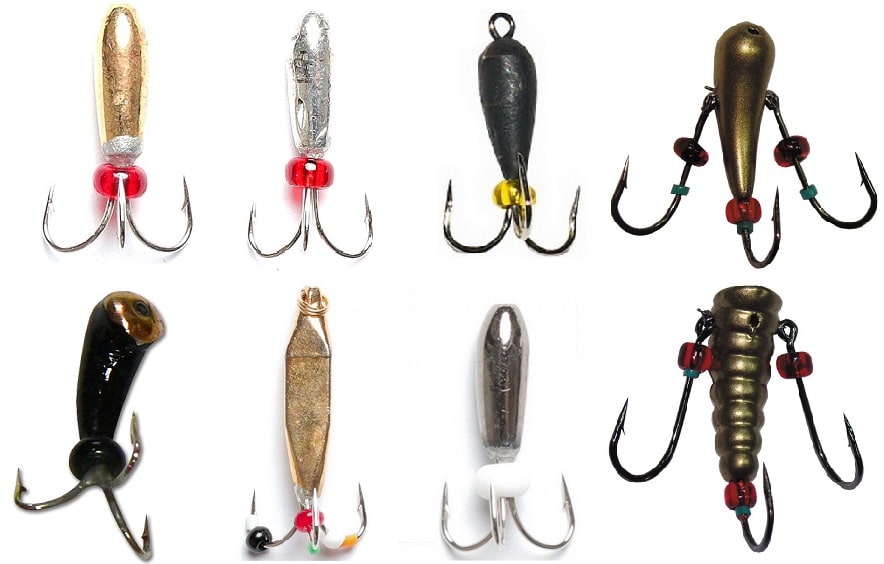
Important! In the maximum wilderness, you should pay attention to places with maximum oxygen saturation. Places of confluence of rivers and confluence of streams, near emissions from hydroelectric power plants and dams, near artificial and natural wormwood, among thickets of reeds and other emerging hollow vegetation.
At the end of the freeze-up , when the ice begins to gradually melt, and areas of open water begin to appear on the current, the perch again begins to move and show activity. It comes out of the depths and begins to hunt in the floor of the water, gradually approaching the early winter camps.
Large water area – where to go?
On large reservoirs (reservoirs, lakes, river bays and rivers themselves), finding a promising point is incomparably more difficult. Especially without knowledge of the reservoir and the local guide. It is precisely clear that wandering aimlessly in such territories is futile. Therefore, we are looking for any landmarks – depth differences (determined by the depth gauge and by the color of the ice), anomalies at the bottom (banks, bends in the bottom, shallows against the background of great depth) any snags, fallen trees, changes in the direction of the current, and also, – we are sure to look for clusters fishermen. The latter is not shameful and even useful.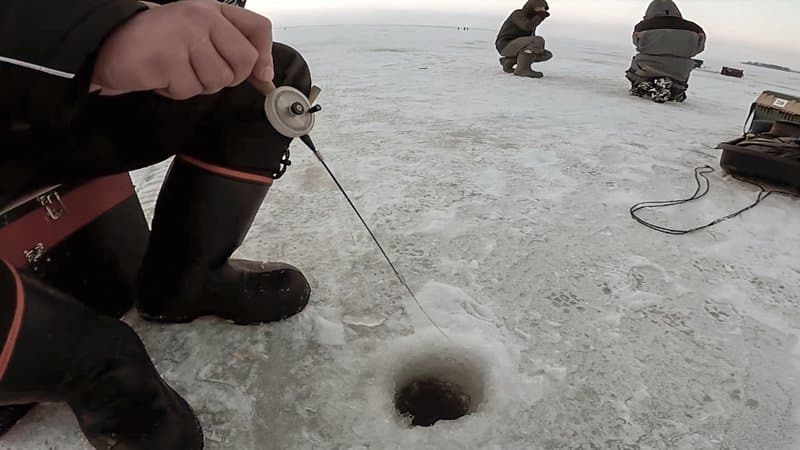
But we are not impudent and do not drill closer than 10-15 meters. [/ Caption]
Driftwood, fallen shrubs and branches – perch anchorage point throughout the winter
Medium sized and large perch – humpback, of course, stands in the snag and at depths. In such places, when fishing on the current, it is worth drilling holes behind the snags downstream – this is the most promising way of fishing at such points. You should prepare 8-15 holes in advance and then process them starting from the first. Moreover, in this case, you can interpret the well-known proverb in appearance: “the angler’s legs and arms feed”, you should not stay for a long time on one hole. If there is no bite for 5-10 minutes with several types of animation, you need to move along the pre-drilled holes. And then look for a new perspective point. It should be noted that when the water level falls, the perch will also roll to deeper places, such situations are observed on reservoirs, rivers near dams, lakes connected to rivers.
Advice! It is important to start exploring the reservoir in the summer, if possible. It is in the summer, with the help of eyes, experience, spinning and an echo sounder, that you can outline promising points for perch parking, including in winter.
Strategy and tactics of actions of a fisherman on a pond when fishing for perch on devils
Having found ourselves on the reservoir, we determine the promising points of the perch parking (see above), so as not to waste time and effort searching for the entire water area. We study the relief, characteristic turns and bends of rivers, depth differences, edges, pits using a depth gauge. We mark snags, fallen trees and areas near them. If the reservoir is familiar, we recall the summer tasty points and impose them on the winter realities. We drill from the very coast and to the depth in a checkerboard pattern of 8-15 holes at a distance of 6-8 meters from each other, covering the entire marked area. The deeper, the larger the devil is used so that you can adequately animate it. We start fishing from the first hole, use 2-3 animation methods for 5-7 minutes. If there are no bites, we move on to the next one. We don’t stay any longer. If there are jabs, but the fish is not detected,or the bite is very sluggish, which means the perch is passive. To stir it up, it is worth changing the devil to a smaller one / of a different color and shape / taking a jig with a free tee suspension, changing the animation to a more active and daring one, or, conversely, more imposing.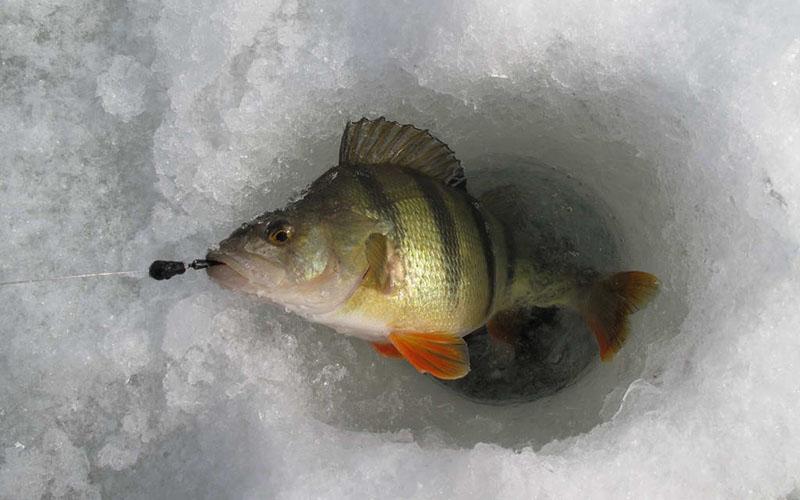
Influence of weather conditions
The beginning and the end of winter is the time for active biting of perch on the devil’s mormyshless mormyshka. At this time, it is worth actively looking for it throughout the day, often regardless of the weather. But it was noticed that biting is more active at times when the weather, and hence the atmospheric pressure, is stable for at least 3 days. In the wilderness, it is worth, if possible, to select thaw days at low pressure. You should not go to the pond to change the weather. A sharp change in wind is also not a plus. https://youtu.be/lSXKYj2Pj-U
The kind of devil animations that striped robbers love
In the first place after a correctly defined point comes the correct delivery of the devil – animation.
It is worth considering the fact that the striped robber in most cases prefers high-frequency and small-amplitude play, with sharp jerks, chaotic steps, etc. Except in cases of deafness and lack of oxygen. On such days it is worth trying postings, aka bream – slow, imposing with a lot of pauses.
So, basic postings for an active perch:
- The classic “step” – the bottomless bowl is lowered to the bottom, a micropause is given and then, in steps of 5-20 cm, it rises 50-60 cm from the bottom. The size of the steps, the sharpness of the rise and its uniformity are varied and selected on the reservoir.
- Dotted strictly vertical rise .
- Uniform or accelerated throwing of the devil up with chaotic or measured dribbling with a jig.
- Dribbling on the stairs . A step is made, but instead of a pause on the steps, the mormyshka shakes finely finely with the help of the hand or with the blows of the fingers of the left hand on the whip of the fishing rod.
- Lifting and dumping . Uniform lifting and free fall without attachment. The downside is poor bite control.
- Interpretation of the previous options – toss on x, reset to half x . Figuratively – toss the jig by 30 cm, drop it to 15, toss it by another 20, drop it to 10, and so gradually bring it to the minimum difference and lower it to the bottom. It is convenient to actively fish a wide range of depths.
- Chaotic blows to the bottom . The devil walks at the bottom, with blows against him and a parallel rise of turbidity. A very working option for the perch, which graze at the bottom.
- Saw links cutting . The step is not made vertically, but in jerks to the sides at an angle to the vertical. Although the devil is initially a vertically playing jig, but this option for an active predator gives a result. Chaotic jerks in different directions. The more active the fish, the less pause.

- stirring at the bottom, practically without separation from it;
- slow rise of the devil, with a long pause at the end point;
- broaches along the bottom, if possible (open hole or wide hole, clean bottom, relatively powerful tackle);
- shallow dribbling in almost one place.
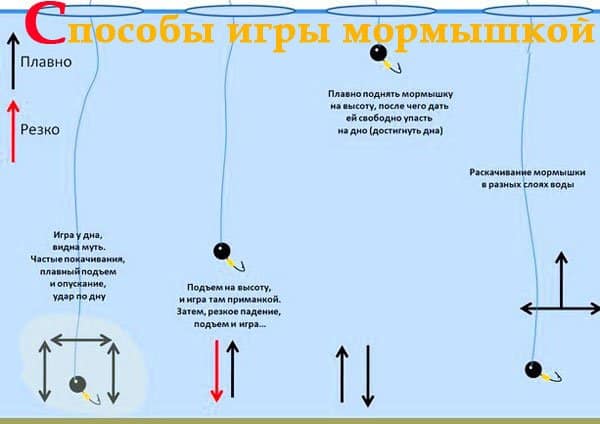
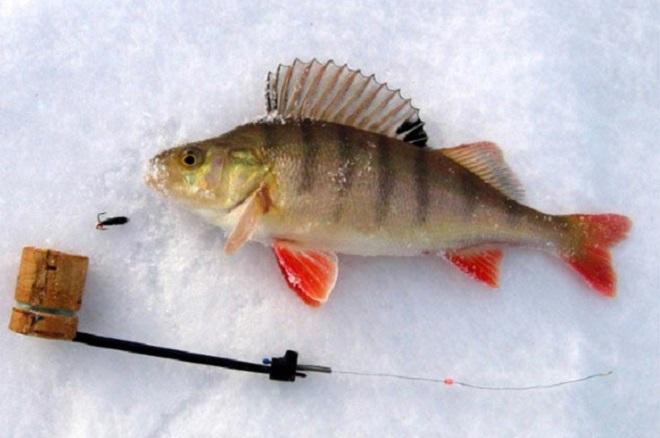
For fishing, sometimes you have to drill hundreds of holes and walk not a single kilometer on the ice. Therefore, we recommend having a comfortable drill with sharpened knives, comfortable clothes and shoes, and a minimum of equipment.
Better to see once
Video clips that reveal important practical aspects of catching perch for the devil in winter. A seasoned perch to hell: https://youtu.be/2ZzqeksU3rg Catching a perch on a devil on the first ice: https://youtu.be/iQHLmFkOVTo
On the selection of a line for a perch is an important aspect of overall success.
There are a great many varieties of devils:
- in shape – a drop, chased, ants, barrels, jellyfish, trapezoids, etc.
- by material – steel, tungsten, lead;
- by manufacture, types and subspecies – a devil, a goat, a witch, rigidly fixed soldered tees and freely playing, etc.
- as well as by weight, colors .
Therefore, it is rather difficult to pick the same worker among such wealth, if in general it is possible. The choice is very wide, both devils and factors affecting what type of bait will work for perch in a particular situation. You should collect the optimal set for your reservoirs, fishing conditions and the size of the perch, as well as for your hand and … love. After all, as you know, it is not the bait that catches, the fisherman catches. Let’s go through some points that can be noted when choosing a line for a perch (only conditionally, these are not dogmas!). If the active perch grabs everything in a row, then the passive prefers the pot-bellied short ones, perhaps due to their more frequent and aggressive play.

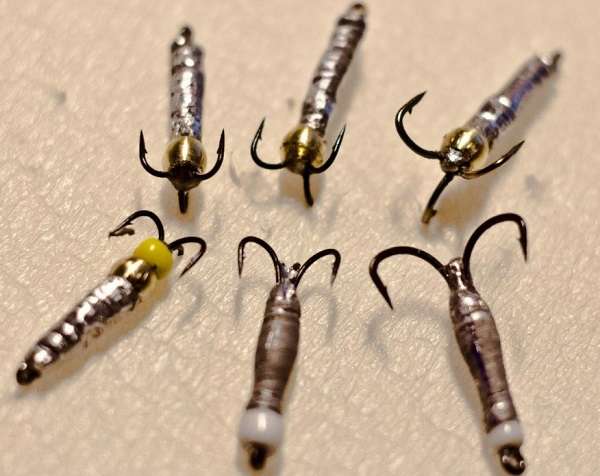
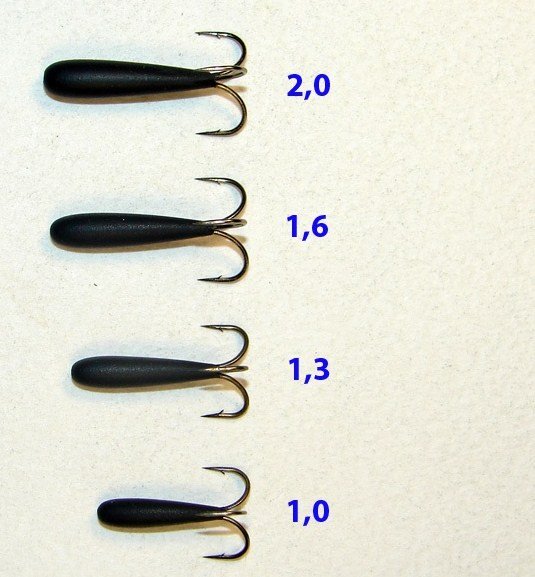
We collect the tackle
Success in catching the line will come to those anglers who collect balanced tackle. Many people successfully use a “balalaika” -type fishing rod – it is light, sensitive and allows you to animate the smallest devils. At the same time, in view of the fact that catching the devil is always an active game with constant movement of the hands, the fishing rod must be comfortable, light and reliable, so as not to turn pleasure into hell. The rod should have a sensitive carbon fiber rod. An ultrasensitive nod from lavsan, clock spring, boar bristles is required. The length of the gatehouse is in the region of 10-15 cm. You need to select a specific model, material, length empirically and preferably in the bathroom at home. A suitable nod must be in balance with the entire tackle. Don’t fall too much under the weight of a devilbut also do not jump like on a trampoline at the slightest jerk during the animation of the bait. https://youtu.be/–MEeMenuKc When fishing with a rewinder, most frequencies and amplitudes can be set to an underused nod, this must be taken into account when choosing a gatehouse for catching the devil.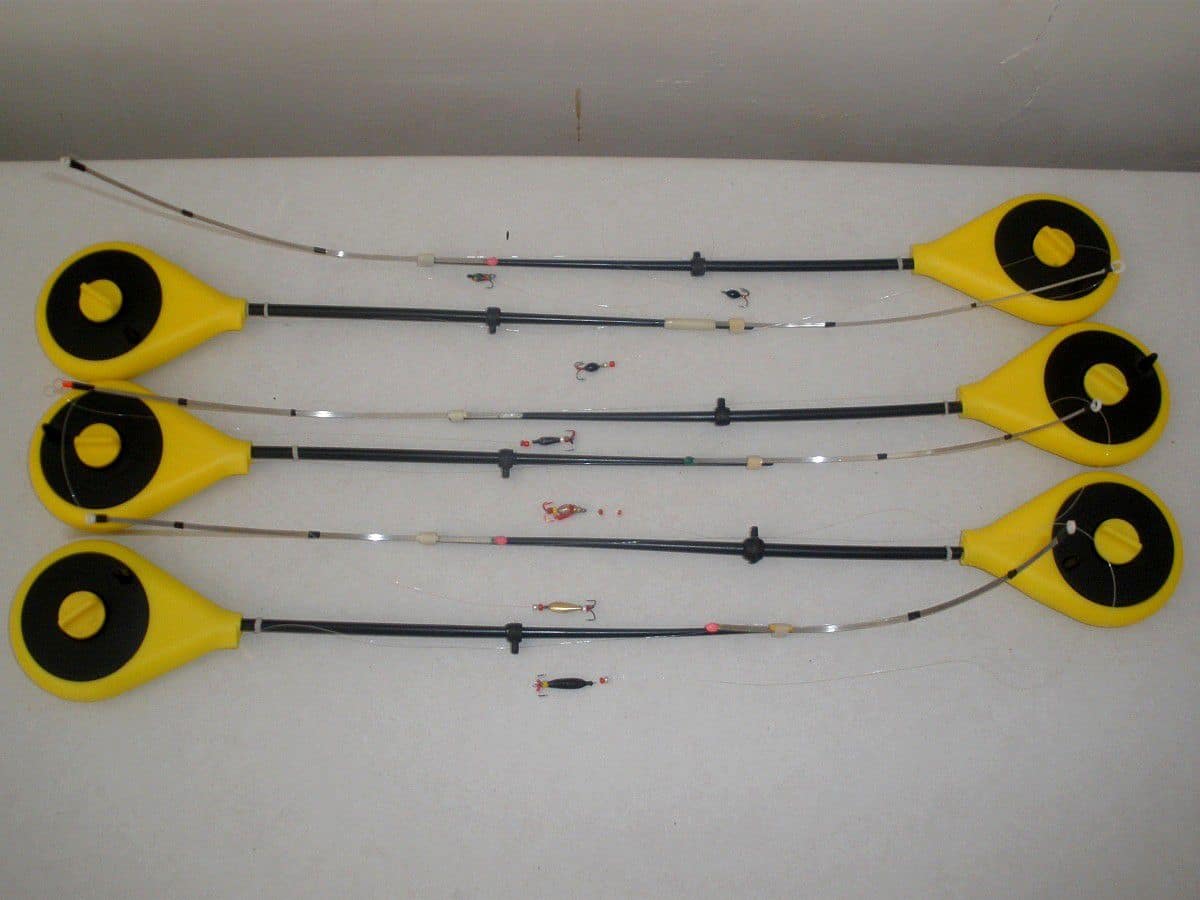

- for catching sports perch with the little finger “on the amount” 0.05-0.08 mm;
- universal diameter for most situations 0.08-0.14 mm;
- if you plan to fish for large perch from 500 grams and more than 0.14-0.16 mm.

